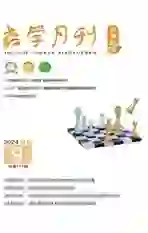英语新教材的阅读启蒙第一课
2024-10-01夏恩力
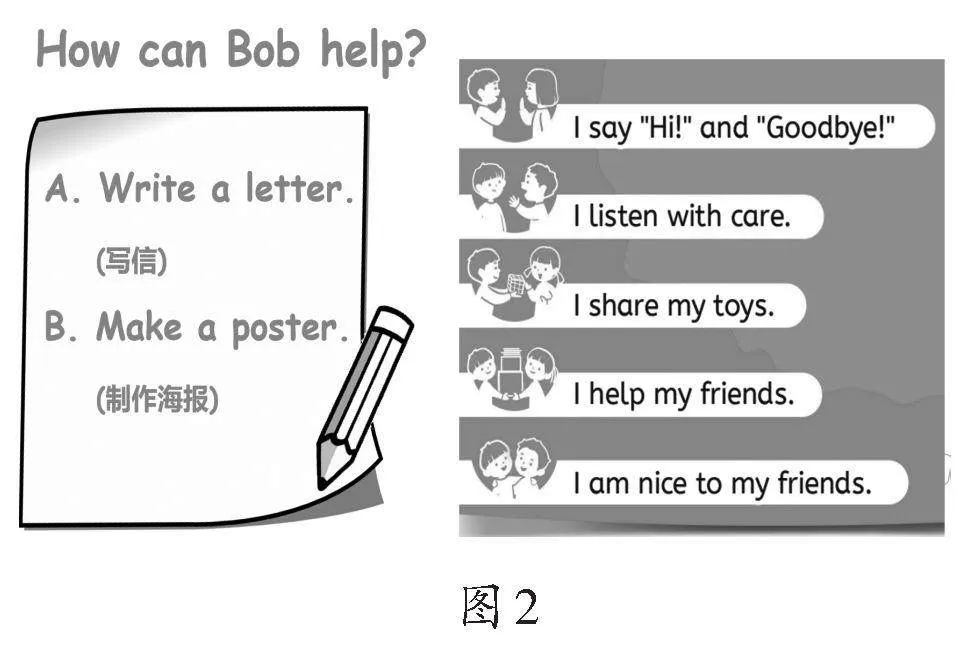
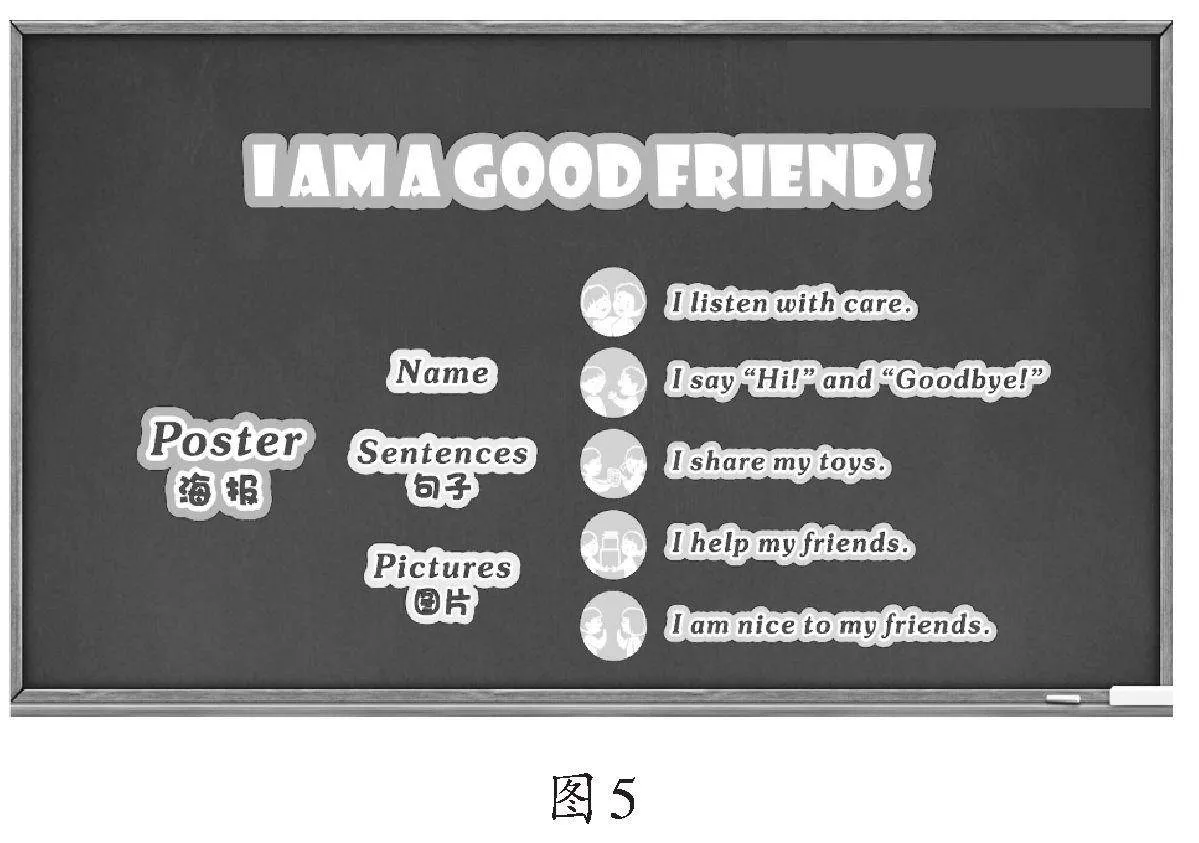
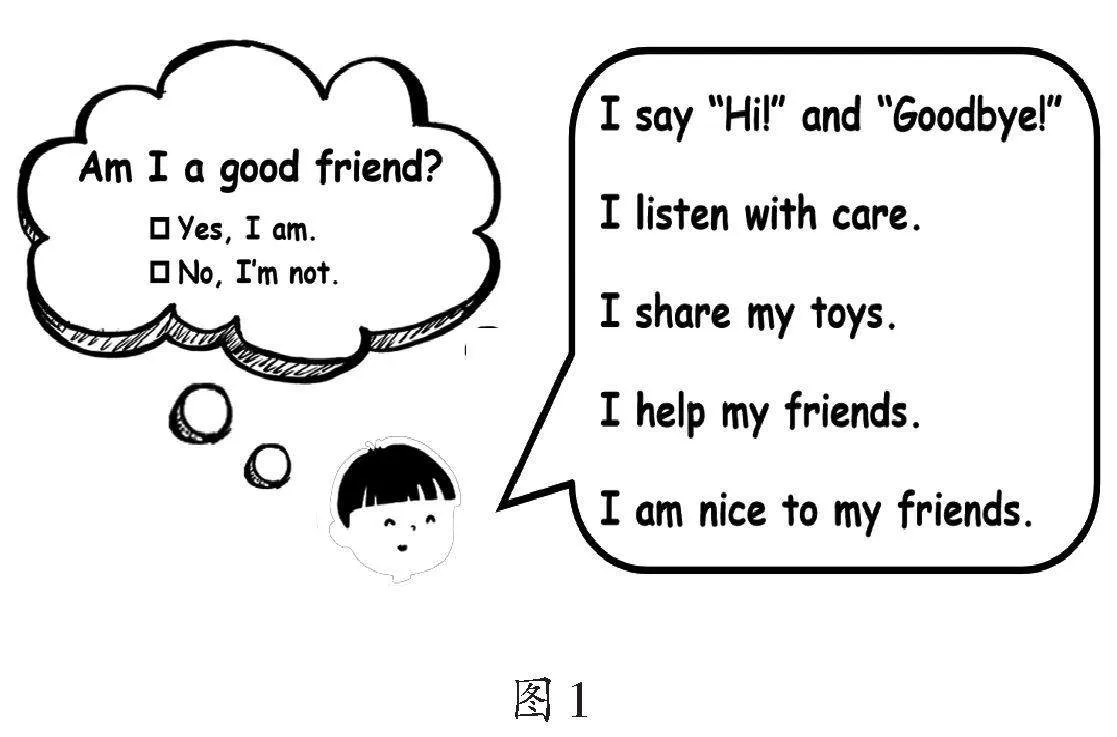
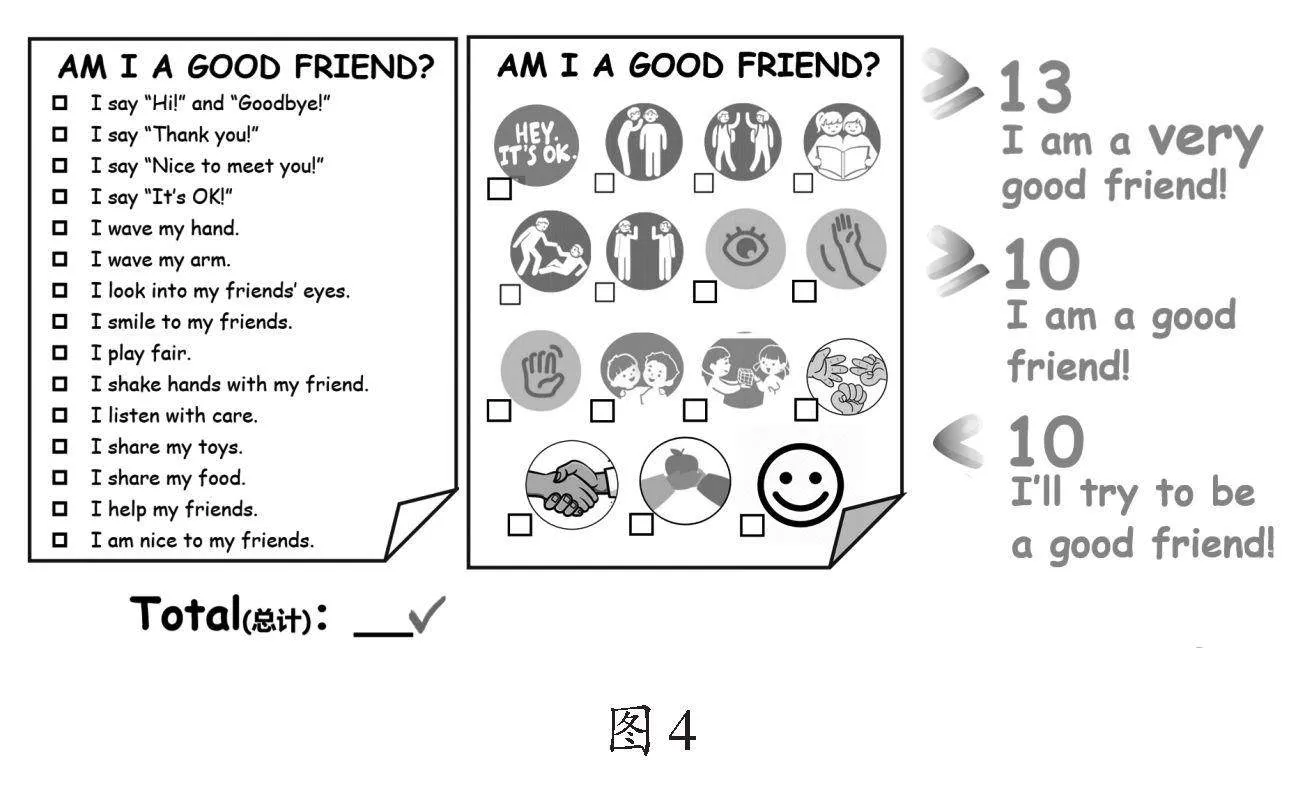
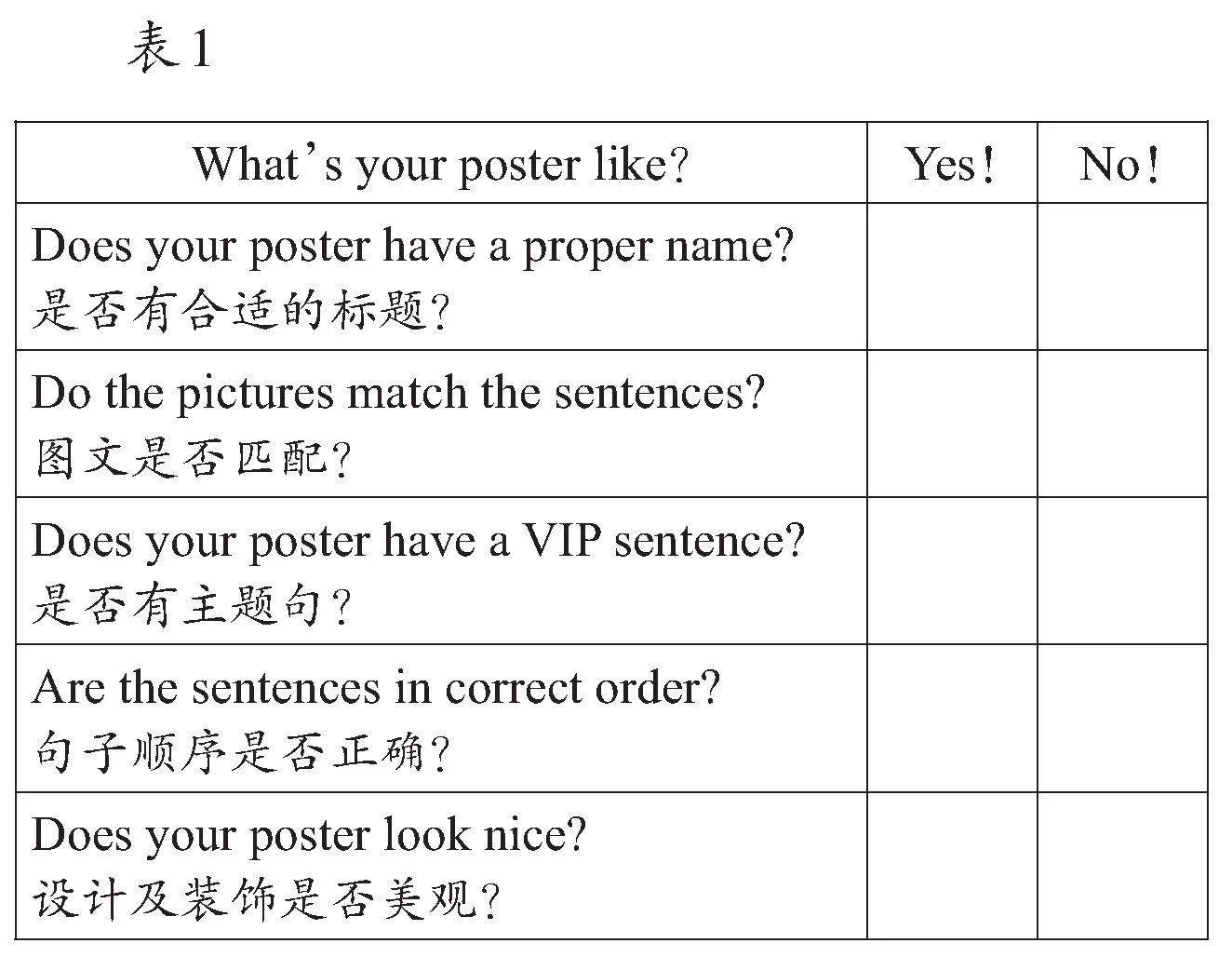
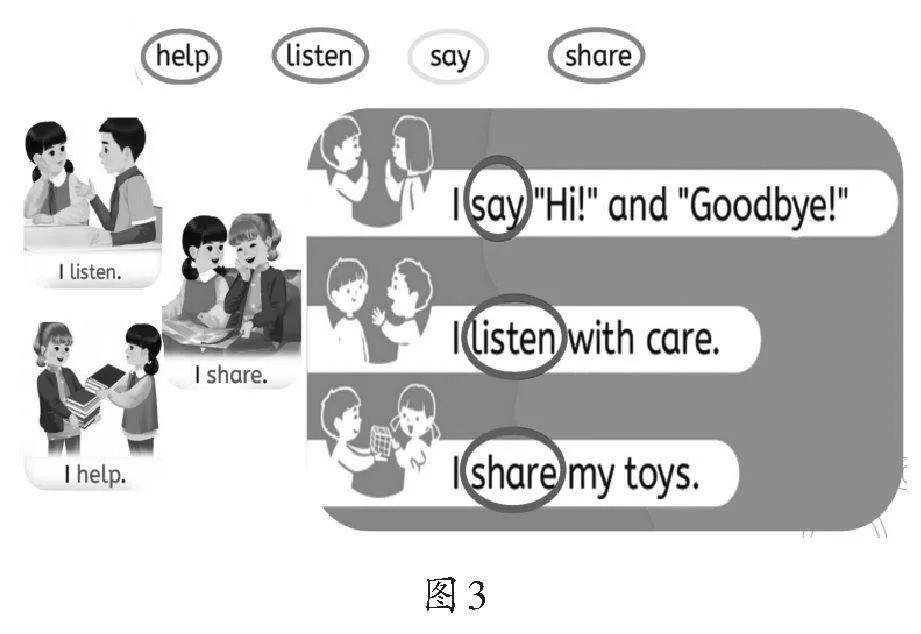
一、教材分析
本课内容选自《义务教育教科书 英语(PEP)》三年级上册Unit 1 Making friends。本单元以问题“How do we make friends?”为线索,围绕Part A中的子问题“How do we greet friends?”和Part B中的子问题“How can we be a good friend?”展开。本课为该单元的第6课时,是一节读写启蒙课。教学内容主要为Part B Start to read,包含一张与交友有关的海报。
二、教学目标
通过阅读如何交友的海报,了解交友时应有的行为表现。
体会海报标题、图片和内容之间的关系。
了解句子的基本结构,识别海报中的主题句,知道主题句可用于引领或总结语篇。
与同伴合作,制作交友海报。
三、教学重难点
重点:通过阅读如何交友的海报,了解交友时需要具备的行为表现,并据此反省自我,改善自己的交友行为。
难点:了解海报的基本要素,并制作结构完整的交友海报。
四、教学过程
(一)读前活动
1. Listen and chant
课件播放本单元Part B Listen and chant的配套视频,让学生跟着视频吟唱。接着引导学生为chant配上动作,尝试边做动作边吟唱。
2. Name the chant
T: The chant has no name. Can you name the chant?
S1: Am I a good friend?
S2: I am a good friend.
S3: Making friends.
T: The children are asking themselves, “Am I a good friend?”
学生根据图片、歌词、视频,判断chant中的人物是否为一个good friend,并代入角色进行汇报。
T: Hey! Mike! Are you a good friend?
S1: Yes, I’m a good friend. I share/help/listen.
3. Is Chen Jie a good friend?
课件出示Chen Jie的头像及上一课的插图。
T: Chen Jie is asking herself, “Am I a good friend?” Is Chen Jie a good friend?
学生看图回顾上一节课的内容,代入Chen Jie这一角色,回答Chen Jie的自我提问“Am I a good friend?”,并复习“I smile/share/help/listen.”。
S2: Yes, I’m a good friend. I smile/share/help/listen.
(二)读中活动
1.进入情境,提取语篇主要信息
(1) Is Bob a good friend?
课件出示小男孩的图片及其名字Bob,引导学生拼读男孩的名字,并代入Bob的角色进行自我介绍。
T: Here is a boy. He says,“Hello! I’m ...”
Ss: Bob.
T: Yes!So when he greets friends,he introduces himself and says ...
Ss: Hello! I’m Bob.
此时,教师在课件上出示Bob的自我提问:“Am I a good friend?”
T: Bob asks himself, “Am I a good friend?”
教师引导学生浏览男孩Bob的独白(如图1),作出选择,完成任务单。
教师带领学生校对答案。
T: Hey, Bob! Are you a good friend?
S1: Yes, I am. I listen with care.
S2: Yes, I am. I help my friends.
(2) How can Bob help John?
课件出示John的图片。教师告诉学生“John不知道该如何结交更多的朋友”,由此引入情境:John wants to know how to make friends. Bob wants to help!
T: This is John. He wants to make more friends. Bob wants to help. He says ...
Ss: I can help!
T: How can Bob help? Maybe he can write a letter to John. Maybe he can make a poster.
教师出示图2,引导学生阅读,完成Read and choose部分的任务。
学生在教师的引导下得出结论“He is making a poster.”。教师出示海报。
(3) Name the poster.
T: The poster has no name. Can you name it?
S1: How to make friends?
S2: I am a good friend.
S3: Am I a good friend?
教师在课件上出示海报的标题,带领学生朗读海报标题并板书“I am a good friend.”,引导学生再次关注“This is the NAME of the poster.”。
2.细读语篇,关注细节信息
(1) Which poster do you like?
教师用课件出示纯文字的海报和图文并茂的海报,引导学生比较异同。学生认识到一张好的海报应该由文字和图片构成。
T: Bob makes 2 posters. Which poster do you like?
Ss: Poster 2.
T: Why?
Ss: There are some pictures.
T: Yes. There are sentences and pictures on Pos-
ter 2. But on Poster 1, there are only sentences. (板书sentences) Pictures are very important for a poster!(板书pictures).
(2) Match the pictures with sentences.
课件出示插图和海报,学生阅读完成配图连线。接着,教师带领学生校对答案。
T: What does this picture mean?
Ss: I share my toys.
T: Yes! Look! Bob has a toy. It is a magic cube. It’s a nice ...
Ss: Toy.
T: This is Bob’s ...
Ss: Friend.
T: Yes! Bob’s friend wants to play with Bob’s ...
Ss: Toys!
T: Bob says ...
Ss: I share my toys.
3.再读语篇,关注单词、句子的区别
(1) Circle the words on the poster.
T: Let’s read the poster again and find the words. Can you find the word “help”?
Ss: Yes.
T: Where is it?
T: Now it’s your turn to find the words(圈出词汇).
学生阅读海报,完成第二部分的圈词练习。
(2) Get to know the differences between words and sentences.
课件出示学生所圈的词汇,如图3所示。
T: Are they sentences?
Ss: No!
课件出示Part B Let’s learn的内容。
T: Are they sentences?
Ss: YetQJCW/6AiftQhQUklanzM5kIbhzIdNGu52LZ0UUybe0=s!
课件出示本课海报上的内容。
T: Are they sentences?
Ss: Yes!
(3) Find the VIP sentence.
课件出示Part B Let’s learn的内容和海报上的完整内容。教师要求学生关注海报上的五个句子,并找出海报中的主题句。
T: How many sentences? (指Part B Let’s learn的内容)
Ss: 4.
T: How many sentences? (指海报内容)
Ss: 5.
T: Are there any VIP sentences? (指Part B Let’s learn的内容)
Ss: No.
T: Is there a VIP sentence? (指海报内容)
Ss: Yes!
T: Read and underline the VIP sentence from the poster.
学生画出主题句“I am nice to my friends.”。
T: Where can I put this sentence? (拿着句子磁贴)
T: Can I put it here? (将句子磁贴放在前四个句子中间)
Ss: No.
T: Can I put it here? (将句子磁贴放在末尾)
Ss: Yes!
T: Can I put it here? (将句子磁贴放在开头)
Ss: Yes!
4.朗读语篇,关注语音语调
T: Now Bob’s poster has ...
Ss: A name, pictures, some sentences and a VIP sentence.
T: Yes! It’s a perfect poster now! We can read it together.
学生听完该部分的录音后进行跟读,根据课件中出示的句子的升降调、连读和重音等记号,模仿录音的语音语调进行朗读。
(三)读后活动
1.反思自己的交友行为
T: Bob is a good friend. How about you? Are you a good friend?
学生同桌讨论其他交友注意事项,反思自己的交友行为,思考自己是否为一个good friend。
S1: I am a good friend. I share food with my friends.
S2: I am a good friend. I say “It’s OK.” to my friends.
当学生遇到新的单词和短语时,教师可以将其记录在板书上,使课堂生成更丰富。
T: Here is a quiz to test if you are a good friend. There are 2 versions of the quiz,the sentence version and the picture version. Now read and finish the quiz.
教师引导学生回顾所学知识,反思自己的交友行为,对照海报中提到的行为表现,选择相应的句子或图片,完成问卷(如图4)。
T: How many ticks do you get?
学生数完成的问卷中 √ 的个数。
T: If you get more than 13 ticks, tell yourself, “I am a VERY good friend.” If you get more than 10 ticks, tell yourself, “I am a good friend.” If you get less than 10 ticks, tell yourself, “I’ll try to be a good friend.”
2.制作海报
T: We have learned how to make friends. Let’s try to make our own posters! Work in pairs. Cut the pictures and sentences. Paste them on the colour paper. Remember to name your poster and put the VIP sentence on the right place!
针对该环节的任务,教师制定了评价量规,如表1所示。
学生同桌合作,从问卷贴纸中找到对应的图片与句子,贴到彩色卡纸上,完成海报,并进行展示。其他学生根据评价标准对海报进行评价。
板书设计如图5所示。
(四)家庭作业
听录音,熟练朗读课文。
完成《英语作业本》上的相应作业。
完成交友海报的制作。
五、教学反思
(一)基于学情,定位阅读目标
作为第一节阅读启蒙课,教师充分考虑了英语初学者的特点,设定了符合学生实际情况的阅读目标。本节课是本学期第一单元的最后一课,学生通过阅读海报,及时复习本单元所学知识,进一步了解新学期中该如何结交新朋友,以及作为好朋友该有哪些好的行为表现,而后对自己和他人的交友行为进行评价。学生第一次接触阅读语篇,通过圈词活动感知词与句的区别,了解英语句子的基本构成,并通过阅读海报中的句子,找到支撑句与结论句。在制作海报的过程中,教师引导学生关注支撑句与结论句在语篇中的呈现顺序,以及海报的标题、内容、图片等基本要素。
(二)循序渐进,推进阅读任务
教师在设计学习活动时,充分考虑学生的认知水平,循序渐进地设计了阅读活动。第一个阅读任务要求学生代入小男孩的角色,理解文本大意,判断“Am I a good friend?”。而后,教师用歌谣Am I a good friend?帮助学生顺利开启阅读。在判断文本体裁前,教师设置了“John不知道如何交友”的情境,与Part C Project中John因交友问题向妈妈求助的情境相呼应。课堂以Bob自告奋勇为John提供帮助作为切入,回应Part B的子问题“How can we be a good friend?”。而后,学生通过给海报起名、对比不同形式的海报等活动,关注海报中的要素。最后,教师以“VIP sentence”为主题句命名,便于学生理解。学生通过思考主题句的位置,进一步了解海报中主题句的作用和价值。
(三)回应目标,跟进读后评价
在本课中,教师基于评价目标设计了读后评价活动。如利用“Am I a good friend?”的问卷让学生检查自身的交友行为,引导学生反思自我。在该环节,教师为学生提供了图片和文字结合的自查问卷,为后续的合作剪贴制作海报打下了基础。相对于独立完成一张海报,同桌合作,以剪贴图片、句子的方式制作海报与三年级学生的能力更为匹配。海报评价标准的制定,回应了教学目标。教师设计的评价量规既可用于学生自查,促使学生及时调整作品,又可用于评价同伴作品,学习他人的长处。
